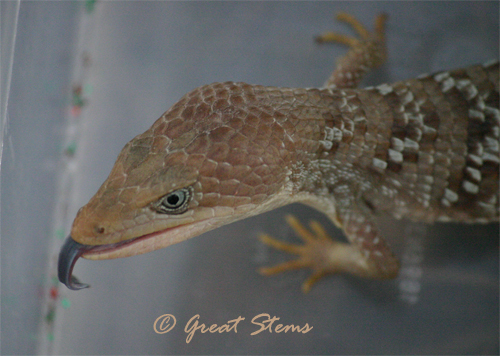In moving dirt and leaves around the garden, we periodically discover a hiding animal. This little creature is a Mediterranean Gecko (Hemidactylus turcicus).
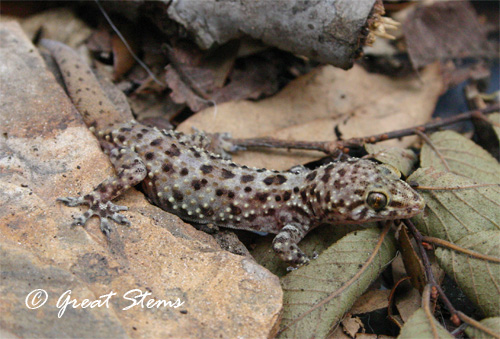 By the name, I am sure you can tell that it's not native to Texas, nor to anywhere else in the United States. Its ancestors most likely came from Southern Europe, or perhaps Northern Africa or Southwest Asia. But this gecko's cousins and siblings have become a common sight in the urban environment in other regions these days, particularly in the southern states and other tropical-subtropical areas. Lots of southern gardeners, so used to seeing Mediterranean Geckos around or even in their house, probably don't even realize that these wall-climbing lizards with their cute toe pads haven't always been here. In fact, the first published report of these geckos in Texas was made in 1955.
By the name, I am sure you can tell that it's not native to Texas, nor to anywhere else in the United States. Its ancestors most likely came from Southern Europe, or perhaps Northern Africa or Southwest Asia. But this gecko's cousins and siblings have become a common sight in the urban environment in other regions these days, particularly in the southern states and other tropical-subtropical areas. Lots of southern gardeners, so used to seeing Mediterranean Geckos around or even in their house, probably don't even realize that these wall-climbing lizards with their cute toe pads haven't always been here. In fact, the first published report of these geckos in Texas was made in 1955.
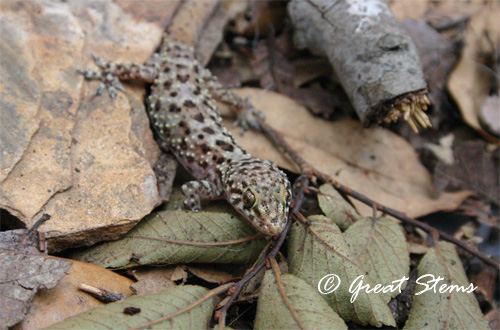 As far as invasive animal species go, this one is currently listed as having "minimal impact" on the native wildlife populations. But there are plenty of invasive species muy malos out there -- European Starlings, Zebra Mussels, Japanese Beetles, Wild Boars (a.k.a. feral hogs), and a long list of other insect, aquatic, and vertebrate species. Starlings and English House Sparrows, for example, kill or push out Purple Martins and take over their nesting cavities. Feral hogs spread destruction and disease across the countryside and in many urban areas. Introduced earthworms are affecting northern forest ranges. Red-Eared Sliders, turtles native to Texas and considered friendly sights here, are problems in many other states and countries because they adapt easily to the local environmental conditions and affect native turtle populations. I'm not even listing some of the worst offenders.
As far as invasive animal species go, this one is currently listed as having "minimal impact" on the native wildlife populations. But there are plenty of invasive species muy malos out there -- European Starlings, Zebra Mussels, Japanese Beetles, Wild Boars (a.k.a. feral hogs), and a long list of other insect, aquatic, and vertebrate species. Starlings and English House Sparrows, for example, kill or push out Purple Martins and take over their nesting cavities. Feral hogs spread destruction and disease across the countryside and in many urban areas. Introduced earthworms are affecting northern forest ranges. Red-Eared Sliders, turtles native to Texas and considered friendly sights here, are problems in many other states and countries because they adapt easily to the local environmental conditions and affect native turtle populations. I'm not even listing some of the worst offenders.
Does the Mediterranean Gecko displace native lizards? It certainly has a tendency to be territorial, so there probably is a little of that going on. But considering that it likes to co-exist with humans, often hanging around exterior lighting on houses and other buildings -- it's possible that there is minimal overlap between it and other species, but I'm no expert. If it has found its own niche in the habitat, then it seems reasonable that the native lizards won't be threatened, though studies are certainly incomplete. Far more dangerous to native wildlife, in my opinion, is the use of pesticides to kill off insects, which are food sources to countless animal species.
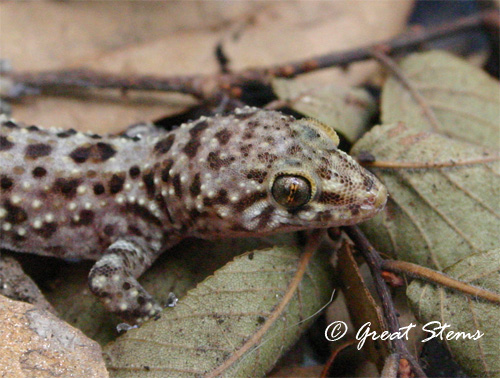
Mediterranean Geckos (actually one of four introduced gecko species in Texas) are easily distinguished from our native Texas geckos, the Texas Banded Gecko and the Reticulated Banded Gecko (both are found in the Big Bend area). The Mediterranean Gecko has bumpy, spotted skin, sticky toe pads, and tiny claws. Its eyes have vertical pupils but no eyelids -- please skip the staring contest with this one. You'll lose.
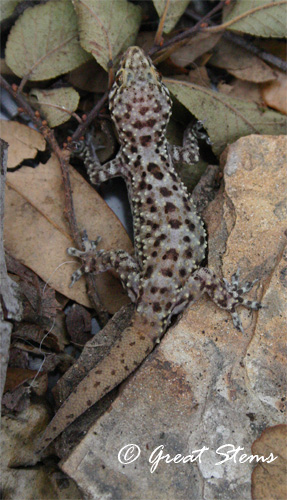 One of its more fascinating aspects is that it can lose its tail to escape a predator and then regenerate it-- such regeneration takes about three weeks. I wonder whether this gecko went through that process -- its tail looks distinctly different from the rest of it.
One of its more fascinating aspects is that it can lose its tail to escape a predator and then regenerate it-- such regeneration takes about three weeks. I wonder whether this gecko went through that process -- its tail looks distinctly different from the rest of it.
The dark spots help the gecko hide in the leaves, but the gecko can lighten its coloration as necessary to blend into other areas. At night it can be quite pale.
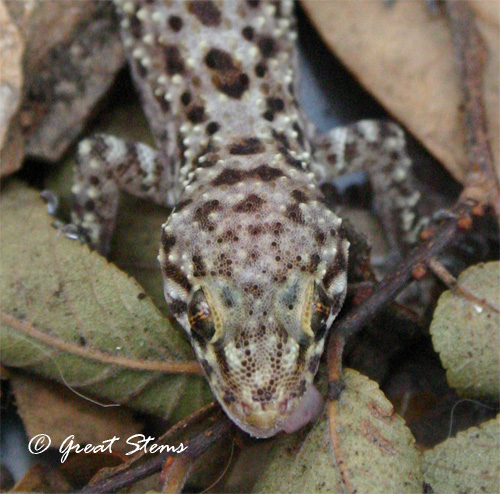 I will say this about Mediterranean Geckos -- they love to eat cockroaches, of which the South surely has more than enough to go around. The geckos love moths, too -- you can see why hanging around a house at night is a pretty great place for a gecko to be. Just stay away from my native lizards, gecko, and we'll get along fine.
I will say this about Mediterranean Geckos -- they love to eat cockroaches, of which the South surely has more than enough to go around. The geckos love moths, too -- you can see why hanging around a house at night is a pretty great place for a gecko to be. Just stay away from my native lizards, gecko, and we'll get along fine.

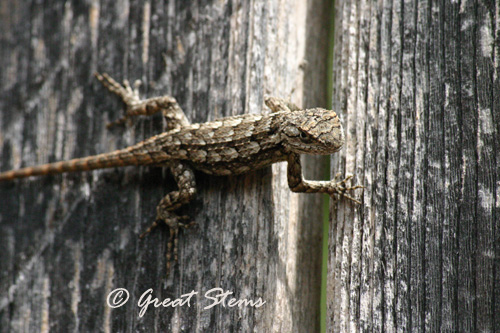
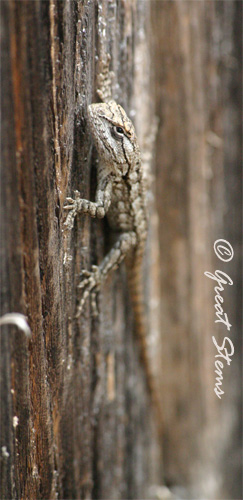 We've got Texas Spiny Lizards all over the place. I wonder if theirs were the little lizard eggs I saw in the brush pile awhile back. There, right there -- that's why we have a brush pile. A place for lizard babies!
We've got Texas Spiny Lizards all over the place. I wonder if theirs were the little lizard eggs I saw in the brush pile awhile back. There, right there -- that's why we have a brush pile. A place for lizard babies!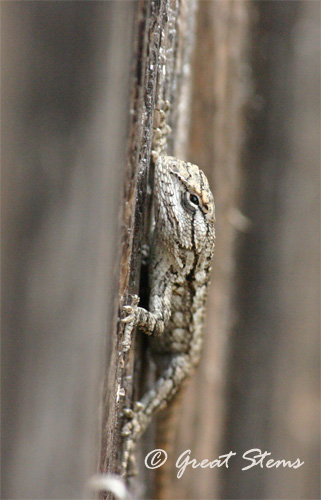

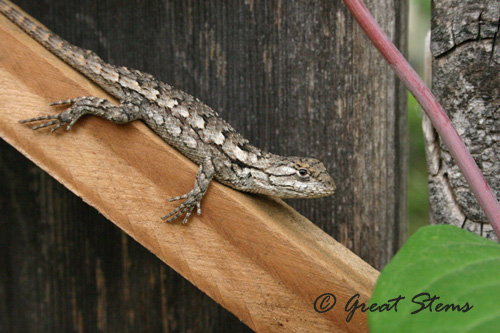
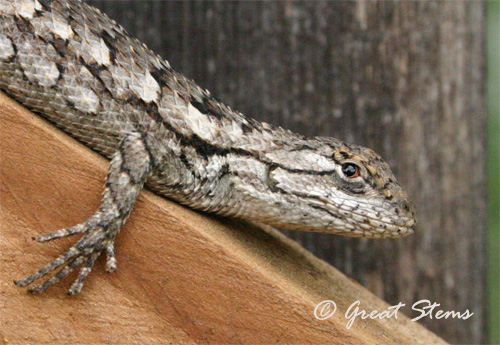
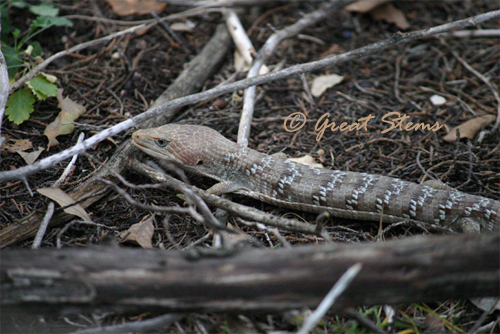
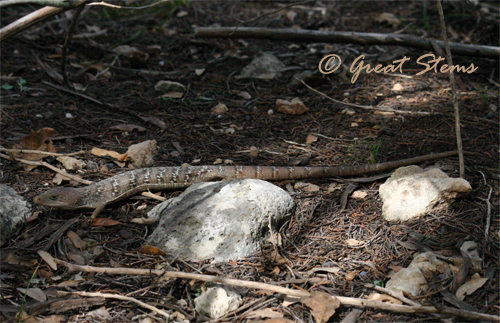
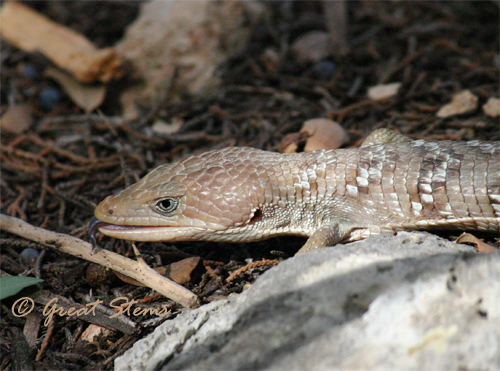 The Texas Alligator Lizard likes rocky hillsides. It moves fairly slowly on its short little legs, making it relatively easy for the biologist to capture the one at the plant rescue. Its slow movement also made it easy for me take some, you know, 100 pictures (I'm not joking). You can see by this next expression that the lizard might possibly have been getting annoyed with my zealous image-snapping.
The Texas Alligator Lizard likes rocky hillsides. It moves fairly slowly on its short little legs, making it relatively easy for the biologist to capture the one at the plant rescue. Its slow movement also made it easy for me take some, you know, 100 pictures (I'm not joking). You can see by this next expression that the lizard might possibly have been getting annoyed with my zealous image-snapping.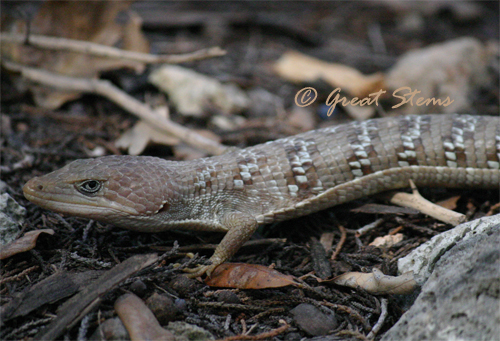
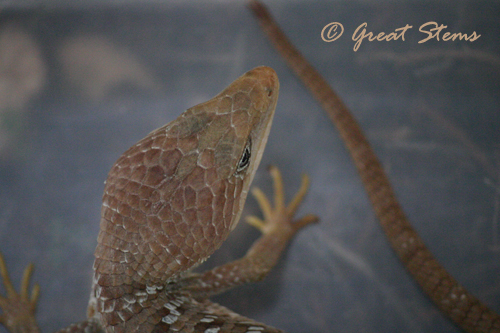
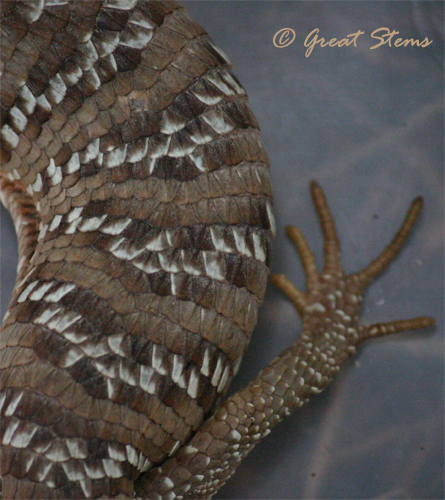 It has a blue, quick-to-flick tongue, and the neatest little digits.
It has a blue, quick-to-flick tongue, and the neatest little digits.